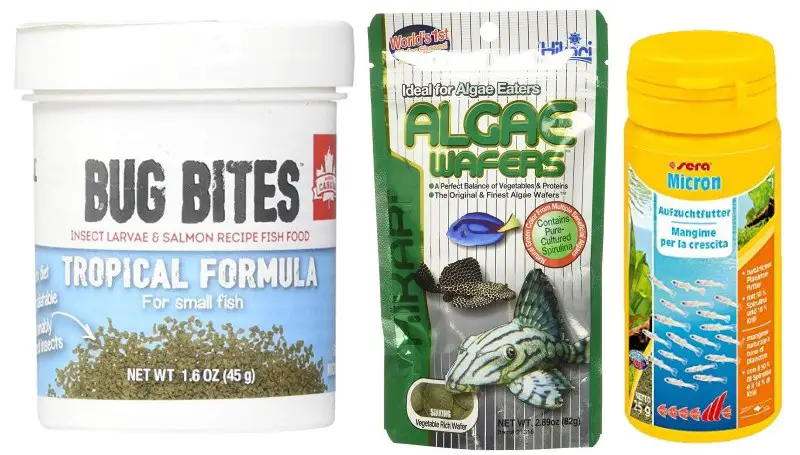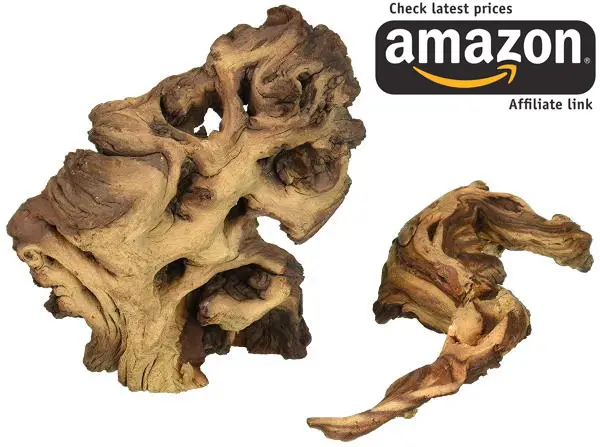Green beans are often suggested as a good food to feed your bristlenose plecos (also known as bushynose plecos). I’ve always fed them to mine, and they honestly really love them. “If it ain’t broke don’t fix it” – I get that. Although, it’s always fun to examine the consensus to see if we, as fishkeepers, can do something different. After all, sometimes when we try something different, we discover something better.
Why Bother Feeding Bristlenose Plecos Vegetables?
It’s a good question. Because you can feed commercial “algae” wafers to your bristlenoses and they’ll love them. The nutrition in the Hikari wafers (affiliate link), for example, is very good. Furthermore, commercial food simply isn’t as messy as throwing vegetables into your aquarium!
So, you might be thinking, “Oof, I’m not going to bother feeding green beans to my plecos!”

Well, hold the phone, because I have some pros that might just outweigh the cons for you.
Observation! That’s my favorite reason for feeding veggies to plecos.
Your bristlenose pleco will pounce on canned green beans dropped into the tank. Your pleco, if it’s on the larger size, will grab hold of a green bean and roll around while it eats it. It’s fun to watch your fish eating like that and having a blast.
And if you have multiple smaller plecos, throwing in half of a zucchini can be fun too; because you can watch your plecos stick to zucchini like glue and slowly gnaw away at it.
Another reason I recommend feeding fresh veggies, is that if you have a male and a female bristlenose pleco then there’s a solid chance they will breed. The male will take care of the eggs, and he’s a great parent so the hatch and survival rate will be decent; therefore, you could suddenly find yourself with 50+ baby bristlenose plecos.
What to feed these baby plecos? Commercial wafers are too dry and tough for such young fish. Green beans out the can, however, are soft and ready to eat!
Is It “Natural” For Plecos To Eat Green Beans?
Some aquarium hobbyists put a lot of effort into keeping their fish’s diets as natural as possible. Plecos are from the Amazon basin, whereas green beans were first cultivated somewhere in Mesoamerica. Additionally, green beans are not a marginal plant. Therefore, it’s easy to say that green beans are not a natural food for bristlenose plecos or any plecos for that matter.
In fact, green beans as we know them, are not natural. They have been selectively bred by humans to be a more desirable foodstuff. However, that is true for most (or perhaps all) fruits and vegetables we eat.
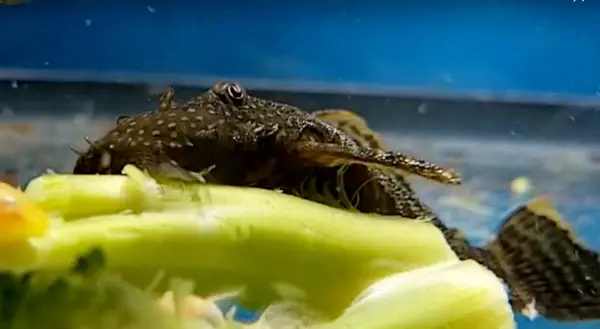
However, while I do admire those who endeavor to feed a more natural diet, personally I don’t concern myself too much with how natural a food may or may not be.
Instead, I look at how my fish react to eating said food, i.e. if they seem bright, active, and healthy on a particular food, I’m inclined to credit the food.
In particular, something I consider when choosing food for my fish is growth rate. This is because in the wild growth rate in fry is fast given a lack of excessive ammonia, nitrite and nitrate. Nutrition is also important. Therefore, with young fish especially, I look to see if my fish are growing well.
Nutrition: Green Beans Vs. Other Veggies For Plecos
Nutritional information can only help us so much. This is because our knowledge of what nutrition a particular species of fish needs is typically incomplete or based on anecdotal evidence. Nevertheless, I’ve compiled a comparison between some of the veggies commonly fed to plecos.
I’ll be looking at, of course, green beans, and I’ll be comparing them to broccoli, zucchini, cucumber, and lettuce.

Keep in mind, the data isn’t perfect. This is because canned green beans, the easiest to feed to your bushynose plecos, have been cooked and processed and thereby may have lost some nutritional value. Whereas the data used for this article is based on values for raw vegetables.
But, hey, this is meant to give you a good grounding to help you make decisions about which veggies to give your aquarium fish.
Green Beans Vs. Broccoli
When it comes to nutritional value, there aren’t many foods that can beat broccoli. This is because broccoli is packed with vitamins, minerals, and even has a decent amount of protein for a veggie!



Just looking at the basics, we can see that broccoli is more nutritious than green beans. In particular, I like that broccoli has a gram extra protein per hundred. Young, growing fish will really benefit from that extra protein.



Again, when it comes to vitamins, broccoli does well compared to green beans. While green beans have more vitamin A and niacin, broccoli out-performs or equals on other numbers.



It’s a similar story in the mineral comparison. Even though green beans have an advantage here and there, overall broccoli is more nutritious mineral-wise.
And do bristlenose plecos enjoy eating broccoli? They sure do!
Check out this video of mine on YouTube showing a group of bristlenose juveniles (about six weeks old) eating broccoli.
Green Beans Vs. Zucchini
I often think of zucchini as not necessarily being one of the most nutritious vegetables out there. So, let’s see if the numbers back that preconception up!



We can see in the above comparison that zucchini cannot compete with green beans when it comes to the basics. With the exception of fat, green beans win on everything.



And when we look at the vitamin details of zucchini, we can see that (on the whole) green beans are more nutritious than zucchini.

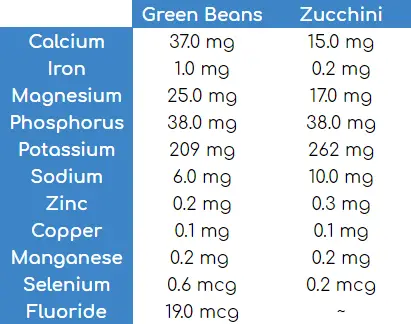

However, the winner between green beans and zucchini is less clear when it comes to mineral content.

So, overall, it looks like green beans beat out zucchini in terms of nutrition. However, while zucchini might not be as nutritious as green beans, I find that it can be less messy in the aquarium. Nevertheless, I would favor green beans over zucchini.
Green Beans Vs. Cucumber
I remember my grandma used to say “cucumber’s nothing but water!” and while that might not be entirely accurate, it definitely communicates cucmber’s profound lack of nutrients!
Let’s see if the numbers back up the above assertion!



Well, cucumber sure is low in calories, low in carbohydrates, low in fat and low in protein! It’s not looking good, is it?



In addition to being low in the fundamentals, it looks like cucumber can’t compete with green beans in terms of vitamins either!



Lastly, as though to add insult to injury, cucumber doesn’t compare well to green beans in the mineral department either.
To be blunt, I wouldn’t recommend feeding cucumber to your bristlenose plecos unless you so happened to have some cucumber laying around.
Green Beans Vs. Lettuce
Lettuce, like cucumber, I’ve heard doesn’t measure up in terms of nutrition. So, let’s take a look at the numbers to either confirm or contradict that preconception.



Well, it’s not looking good for lettuce on the basics. It doesn’t come close to green beans.

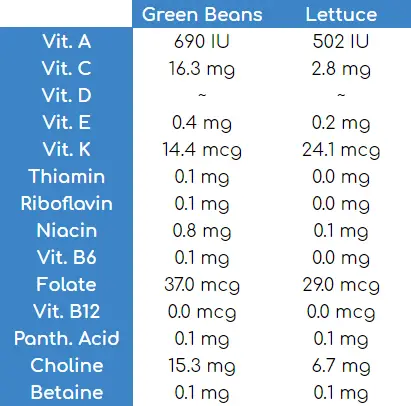

As a leafy vegetable, lettuce beats green beans in vitamin K but loses out everywhere else.



And finally, looking at the minerals, overall it looks better to feed your bristlenose plecos green beans rather than lettuce.
Value: Green Bean Cost Vs. Other Vegetables
This is a tough section to write because the price of vegetables fluctuates based on the season and location you’re buying in. For example, zucchini (where I live at least) is significantly cheaper during our summer months. But frozen broccoli and canned green beans tend to have a more steady price.
Generally canned green beans are pretty cheap, and because they’re canned you can buy them in bulk and store them easily. Whereas, when I feed broccoli I tend to grab the large frozen bags which are more difficult to store. Plus, being frozen means there’s the additional cost required to keep the broccoli frozen until you’re ready to feed it to your plecos.
Can Bristlenose Fry Eat Green Beans?
Yes, and my fry loooove to eat green beans. Because they come straight out of the can, they’re in the ideal condition to be eaten right away. Since they’re completely saturated with the water they were soaking in, they will sink to the bottom of your aquarium immediately. This is a bonus as alternatives might need to be blanched or weighted down to get them to sink. In addition, having been canned, the beans are very soft and even the youngest bristlenose fry are able to eat them.
However, there is a big risk in feeding green beans to your baby bristlenose plecos. The young fish can get stuck inside the thick casing of the bean. If this happens, there is a good chance they will eventually suffocate.

This happens because the pleco fry prefer to eat the interior of the bean, rather than the somewhat leathery outer “shell” of the bean. So, they eat a small hole into the bean, just big enough to get their head in, and they then go all out and devour the interior of the bean. The problem arises when they try to back out of the bean—their fins have spines on them that point backwards, these rear-pointing fins jab into the leathery shell of the bean, trapping the helpless fish inside.
I’m sad to say I learned about this the hard way. So, I want to share this with as many people as I can. Luckily I only lost one bristlenose to the green bean trap, but once was enough for me to learn. If I feed green beans to young bristlenose plecos, I either remove the beans and just feed the pod, or I mash up the beans themselves and try to remove the shells.
While I am an advocate for green beans as a good food for juvenile plecos, I quite prefer to feed them broccoli florets. Admittedly, it can be expensive, but I find my fry seem more vital on broccoli than green beans. When you couple this with the risk of the bean shells, it becomes an easy choice to make.
Which Is The Messiest?
With pleocs, mess is always a big concern. After all, they’re not known as poop machines for nothing. The truth is, they’ll take any food and quickly turn it into poop.
However, some veggies make more of a mess than others when you feed them to plecos because of the way they break down in the tank.
Canned green beans fall apart quite easily because they are soft and saturated. The softness, interestingly, is the reason they’re good to feed to fry, but at the same time it can create a mess.

Frozen broccoli can also be quite messy. Your plecos will prefer the floret/flower part of the broccoli to the stem—although they will eat the whole thing eventually. But, at first, when they’re munching on their favorite part—the floret—lots of little pieces will break off and spread all around your fish tank, causing a huge mess.
The least messy vegetable I like to feed to my plecos is zucchini. I don’t blanch it or prepare it at all. I slice it in half, length-wise, and then stick a stainless steel butter knife in it to weigh it down. And that will last a few days before it starts to get messy and needs to be removed.
Dealing With The Mess – Filtration
Powerful filtration is a good solution for how messy feeding green beans and other veggies can be. Your filtration should have an appropriately high turnover of water per hour. Ideally, a strong enough flow should capture and suck up a lot of the veggie-created detritus.
In addition, you will need to use a progression of pore size in filter foam (i.e. course to medium to fine) so as to mechanically capture and filter out as much of the veggie waste as possible. Otherwise, if the waste isn’t captured, your filter will just pump it back into your aquarium!
However, keep in mind, that if you are feeding vegetables to your fish that powerful filtration isn’t a “set it and forget it” solution. Chances are the frequency of filtration maintenance will need to increase in order to clean off your mechanical filter media and remove any excessive sludge building up where the media is situated.
Lastly, if your bristlenose plecos breed, then be aware that a strong flowing pump will more than likely suck up a lot of your fry. Should your bristlenoses breed, I’d recommend using an air driven sponge filter.
Dealing With The Mess – Substrate & Siphoning
Filtration isn’t the be all and end of all though. There’s more to keeping your aquarium balanced when you’re feeding veggies than just letting your filter suck up most of the stuff.
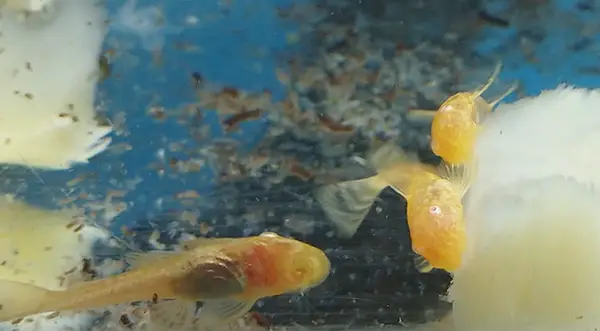
Even the strongest flowing filter pump won’t capture all of the waste, especially if you have a gravel, sand, or aquatic soil substrate. Naturally, food waste will find its way into and beneath your aquarium’s substrate. As such, I’d recommend extra gravel vacuuming and siphoning off of waste whenever you drop green beans into your fish tank for your bushynose plecos to eat.
Now this is a love it or hate it question: substrate or bare bottom? When I’m raising baby bristlenoses I absolutely have to have no substrate. This allows me to siphon off the poop and the broken down green beans with ease. Whereas, with a substrate, it can be challenging to gravel vac without injuring the fry or, worse yet, sucking them into the siphon. Adult plecos are equally messy. So, if it’s not a display tank, then I prefer to keeep them in a bare bottom aquarium also.
Why Some Veggies Don’t Make Sense For Plecos
Veggies like green beans, and also zucchini and broccoli, make sense to feed to plecos because they will (either immediately or eventually) sink and they are quite chunky. This is important because, as sucker mouth fish, bristlenose plecos need to be able to get a grip on their food using their lips.
As such, leafy vegetables that are good for other fish, don’t necessarily make sense for plecos. For example, silver dollars will devour lettuce and spinach. While, yes, bushynose plecos will eat it too, but it’s not as easy for them to really chow down on the stuff.
Synergy With Your Other Fish
And speaking of silver dollars, if you have them in with your bristlenoses, then there’s a good chance they’ll share food with them. In fact, lots of fish like to eat greens in the same way your plecos do. For example goldfish are big veggie lovers, same goes for lots of cichlids, and livebearers love to rasp and graze on any veggies you drop into your aquarium. And have you ever seen a kissing gourami? Those lips are used to scrape algae in the wild, but in captivity the gourami will be happy to scrape at a piece of zucchini instead.

Even if you don’t keep any of these fish with your bristlenose plecos, you might have them in a different tank. In which case, when you crack open a can of green beans for your plecos, don’t forget if you’ve got some leftover that your goldfish would absolutely love some too!
Storing Green Beans
Canned green beans are the cheapest and easiest way to feed green beans to your bushynose plecos. But, a lot of us won’t have enough of them to use up the whole can in one go. Therefore, I recommend keeping the green beans in a plastic container with a lid and popping it in your refrigerator. As a result, you’ll be able to keep them fresh and gradually work through them instead of having to throw away the excess.
What About Commercial Foods?
I’ve mentioned commercial foods a few times throughout this article, and that’s because they’re good. They’re really good. For decades now, fish food manufacturers have been maximizing the nutrition their food provides, while at the same time minimizing how much their food fouls the aquarium’s water.
Therefore, feeding commercial foods to your bristlenose plecos is a good way to ensure they get an appropriate range of nutrients and that the food doesn’t mess your tank up too much. That’s not to say I recommend feeding commercial foods exclusively, but I do think it’s a good idea to feed both a variety of vegetables—like green beans and like broccoli—and also a variety of dried commercial foods.
Personally, I use Hikari’s algae wafers. My plecos love them and the ingredient list is top notch.
Don’t Forget Driftwood!!!
Plecos are natural grazers. Typically, they use their suckermouths to rasp on surfaces such as rock or wood. Importantly, when they graze on surfaces they consume the biofilm growing on it. We went to think of that as just algae, but that is oversimplifying it. The biofilm that grows on aquatic surfaces is comprised of algae, yes, but also fungus and bacteria.

Driftwood is an excellent media for algae, fungus, and most importantly, bacteria to grow. When our plecos rasp on drift wood, the wood itself provides fiber to aid digestion, and the bacteria consumed contributes to a healthy gut.
Therefore, driftwood is vital. Green beans are a great staple, but don’t forget to keep driftwood in all your pleco tanks.
Conclusion
In conclusion, I can say that green beans are absolutely a solid food for your bristlenose plecos. Not only are they fairly nutritious, they’re also very convenient to feed directly from a can.
However, personally, I prefer to feed broccoli because, overall, it is more nutritious. Furthermore, thinking back to bushynose fry getting stuck in the bean shells, I find feeding broccoli to be less of a risk than green beans.
Sources & Credit
Nutrition info came from https://nutritiondata.self.com/
Recommended Foods For Your Other Fish
